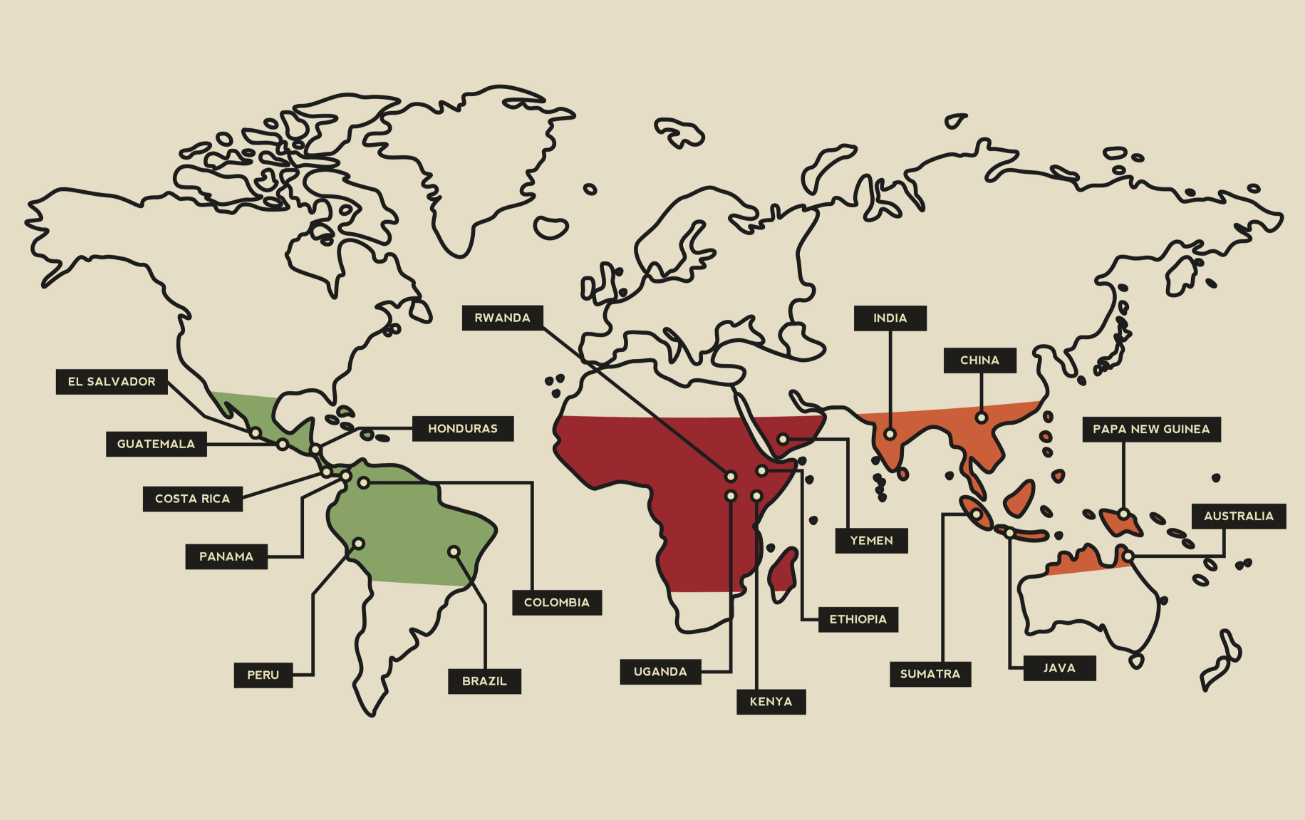How to Choose the Perfect Coffee

When you walk into the coffee aisle at a grocery store it is easy to be overwhelmed. You see a wall of different brands and varieties of coffee staring back at you, and you might not know exactly how to navigate it. Below you’ll find some common coffee terms explained so you can pick the coffee that is right for you!
BLENDS VS. SINGLE ORIGIN
First, let’s discuss blends vs. single origins. Blends are just what they sound like; a variety of coffee from different countries that are blended together to create a consistent flavor profile. When you drink a blend you are experiencing less of how the individual coffees’ taste and more on how the coffees fit together. A single origin is just that - a coffee that is sourced from one country. Single origins let the consumer focus on the unique flavors that exist in the coffee from the specific region it is sourced from. Single origins often change with the seasons, just like any other consumer crop would which makes for a different experience in every bag.
ROAST LEVELS
Now let’s talk about roast levels. There are three common roast levels that you typically see printed on coffee bags - light, medium and dark roast. But you can think of roast levels as a spectrum. A light roast allows the consumer to really taste the coffee as is. Often a single origin coffee will be a light roast so that the consumer can taste the different notes that are present in the coffee naturally. These flavors are often fruity or bright. Most blends are a darker roast to remain consistent. Darker roasts often have a more “traditional” coffee taste that so many know and love. In a dark roast you may taste hints of chocolate. Two great examples of light roast, single origin coffees from Goshen Coffee Co. would be Ethiopia or Colombia while some great examples of dark roast blends would be our Bona Fide, Black Dog Espresso, or French Roast.
THE COFFEE BELT

The “coffee belt” is a series of countries along the equator where the climate is perfect for growing coffee beans. The humid, subtropical conditions in these high-altitude areas have the perfect soil acidity and sunlight requirements to grow coffee. The taste of each coffee varies greatly depending on the specifics of these factors. That is why a coffee from Sumatra can be vastly different from a coffee grown in Mexico and the same coffee from Mexico can taste a little different when you buy it a year later. So cool, right?
WHOLE BEAN VS. GROUND COFFEE
Oxygen is the arch nemesis of coffee. Oxygen greatly reduces the freshness of coffee as it is exposed. We recommend buying whole bean coffee if possible. Whole bean coffee has less surface area to interact with oxygen, unlike pre-ground coffee. Don’t have a coffee grinder at home? No need to worry! Just do your best to look at the date on the coffee bag and buy the freshest one available. That will ensure you have the best coffee buying experience.
In the end, choosing coffee is a very personal experience. Figuring out what you like can take a little bit of time but is always fun. The coffee bag itself is the best resource for choosing what you like. Pay attention to the tasting notes that are listed and choose what sounds the best to you!


